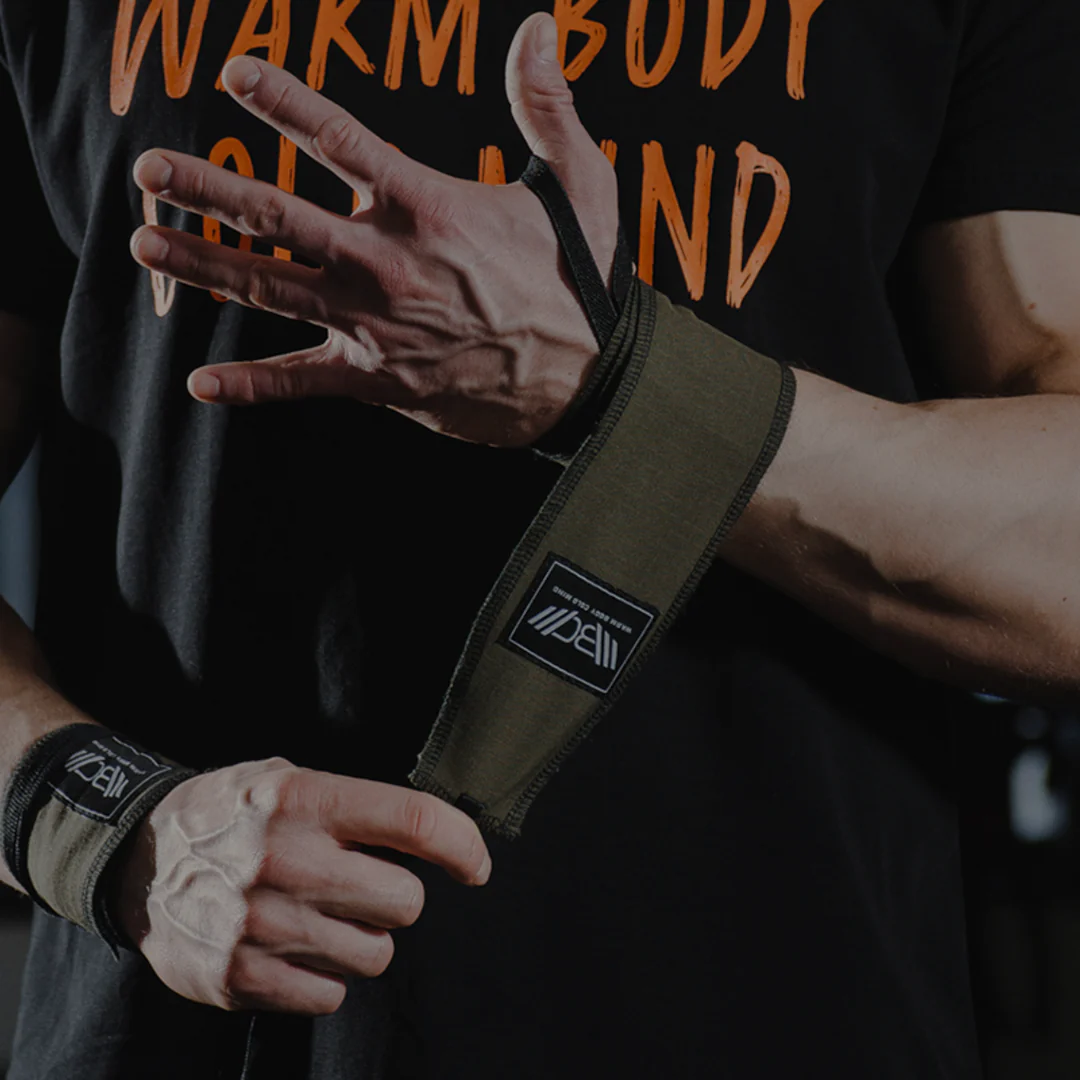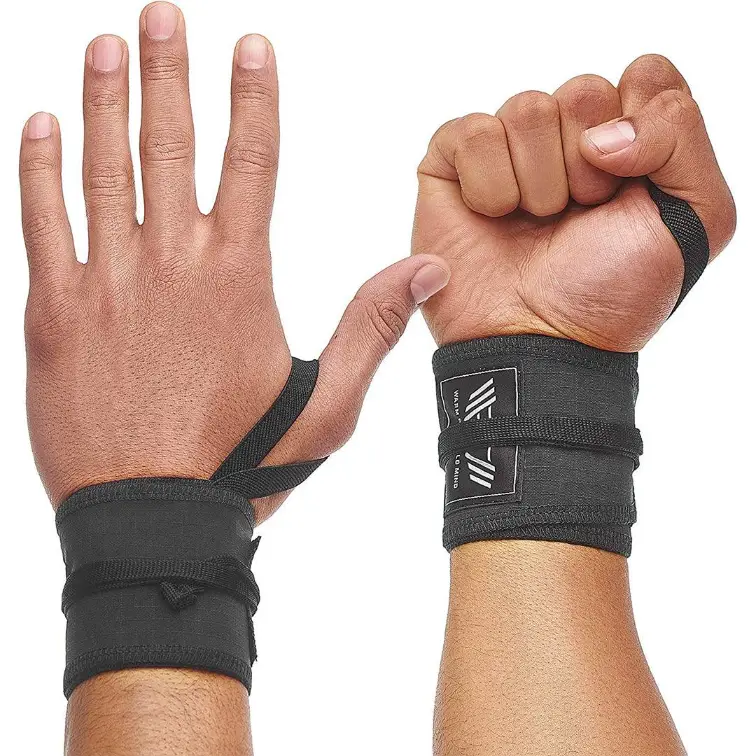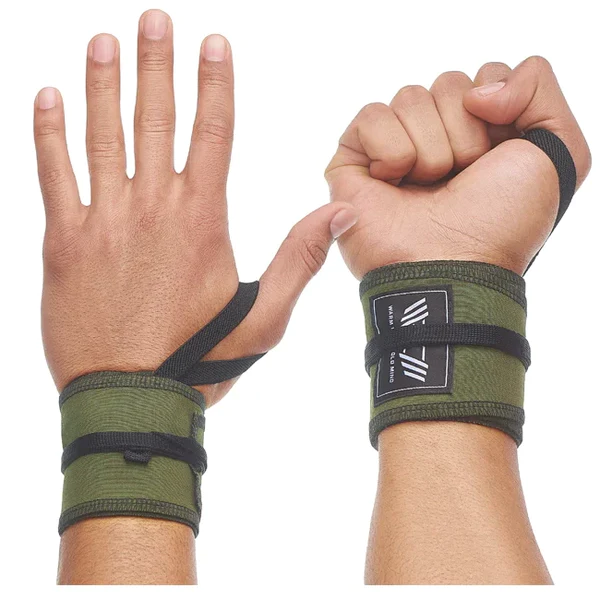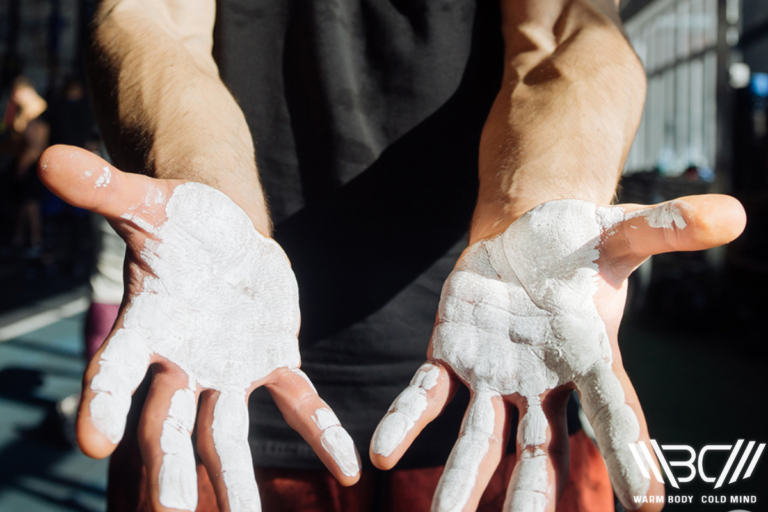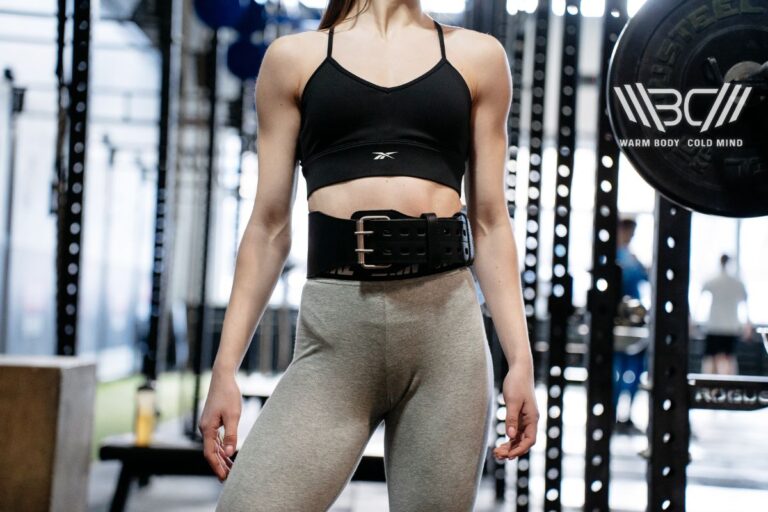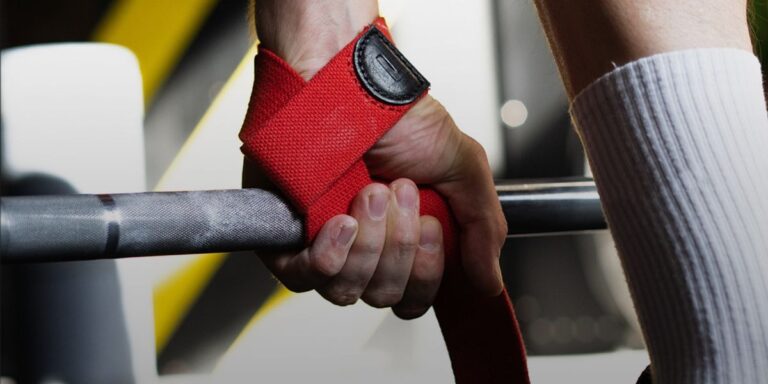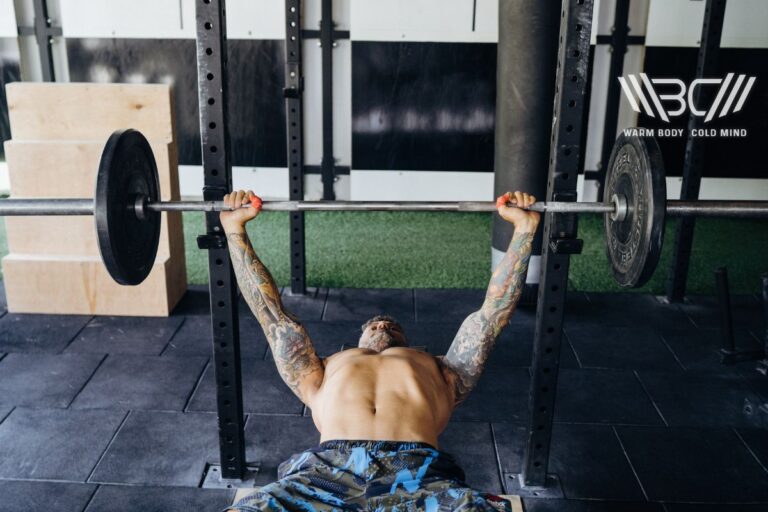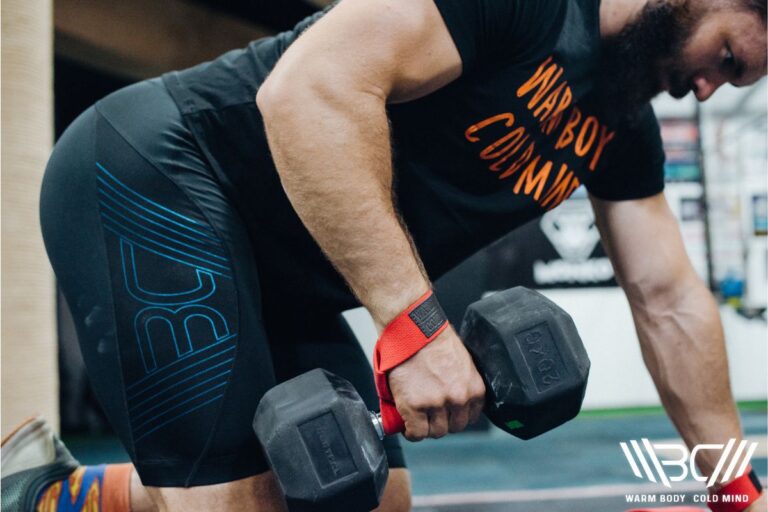Lift Easier: How To Use Wrist Wraps
If you frequent public gyms or follow fitness content online, you might have seen people use wrist wraps for lifting exercises. When used correctly, this inexpensive and easy-to-use accessory can change your lifting experience from tense and loose to comfortable and secure.
Here’s how to use wrist wraps correctly to boost your lifting performance and safety.
How To Use Wrist Wraps? – To use wrist wraps for lifting, place them at the base of the thumb and wrap them well, but not excessively. Once you’re happy with the fit, fasten them using the closure system, usually a buckle or velcro, to prevent unwrapping. This is how to use wrist wraps in a nutshell.
What Are Wrist Wraps And What Are They Used For?
Wrist wraps are a training accessory most commonly used in resistance training activities such as weightlifting, powerlifting, Olympic lifting, and similar. Their primary purpose is to provide additional support and stability to help ease the stress felt by your wrists during heavy lifts. Typically, they’re made of some sort of elastic material combined with a fabric such as cotton or nylon.

Typical lifting exercises such as the bench press, overhead press, snatch, and others can put a large amount of strain on the wrists by compressing the joint or forcing it to roll. This is where wrist wraps come in handy. A wrapped wrist has limited wrist extension and flexion, which makes the exercise more comfortable and prevents injury. These are the main reasons athletes use wrist wraps for lifting.
So, to put it bluntly, do wrist wraps help bench more weight? Despite what you might have heard at the gym, wrist wraps can’t make you stronger than you already are. As in, they won’t increase your lift capacity directly. However, wrist wraps hold your wrists in a solid position and will lower wrist fatigue from exercising, which can make it feel more comfortable to take on more challenging weight.
These effects also play a role in boosting your lifting confidence, which can motivate you to try even higher weights than you use normally. This can be especially beneficial for athletes who believe they’ve plateaued or have a history of wrist issues and need reassurance.
Protecting our wrists has never been more essential. Poor wrist health has become a global epidemic that gets little to no press because it’s not as obvious at first glance. Research suggests that wrist injuries tend to be a major occupational hazard in the industrial sector, such as manufacturing and assembly line jobs.

However, a much bigger concern stems from the devices we’re all required to use on a daily basis – our phones. The increased reliance on hand-held devices for work and communication has us repeating the same motions of swiping and clicking thousands of times throughout the day, leading to phenomenons like the “texting thumb”.
How To Use Wrist Wraps To Boost Your Lifting Performance?
Wrist wraps can indeed boost your lifting performance when used in appropriate situations. Quite often, experienced athletes plateau during lift exercises not because they lack actual physical strength, but because their joints start to give in.
This is why you’ll often see people wear wrist wraps for bench presses and similar push-based exercises that put tension directly on the wrist, apart from the engaged muscle groups. Here’s how to wear wrist wraps to benefit from them:
1. Wrap Them Correctly
When first putting them on, arguably the most important thing to know is how tight should wrist wraps be. If you put them on too loose, they won’t provide you with any of the benefits, it will be as if you aren’t wearing them.

Cotton Weightlifting Wrist Wraps
Discover unparalleled wrist support with Warm Body Cold Mind cotton wrist wraps.
Conversely, if you wrap them too tight, you can limit necessary joint mobility for certain exercises and even cut off your blood flow, which could cause discomfort, pain, and even injury. Here’s a step-by-step guide on how to put on wrist wraps:
- Check if your wraps have a thumb loop – if they do start by sliding your thumb through it first before you start wrapping.
- Place the wraps around the back of your wrist, with the top end just under where it starts to bend.
- Next, wrap the material around your wrist in the direction away from your thumb.
- Initially, pull the wrap tightly on your first wrap-around, then ease the tension on the second to let the fabric readjust.
- Use whichever fastening system is available, usually a velcro or buckle, to lock your wraps in place.
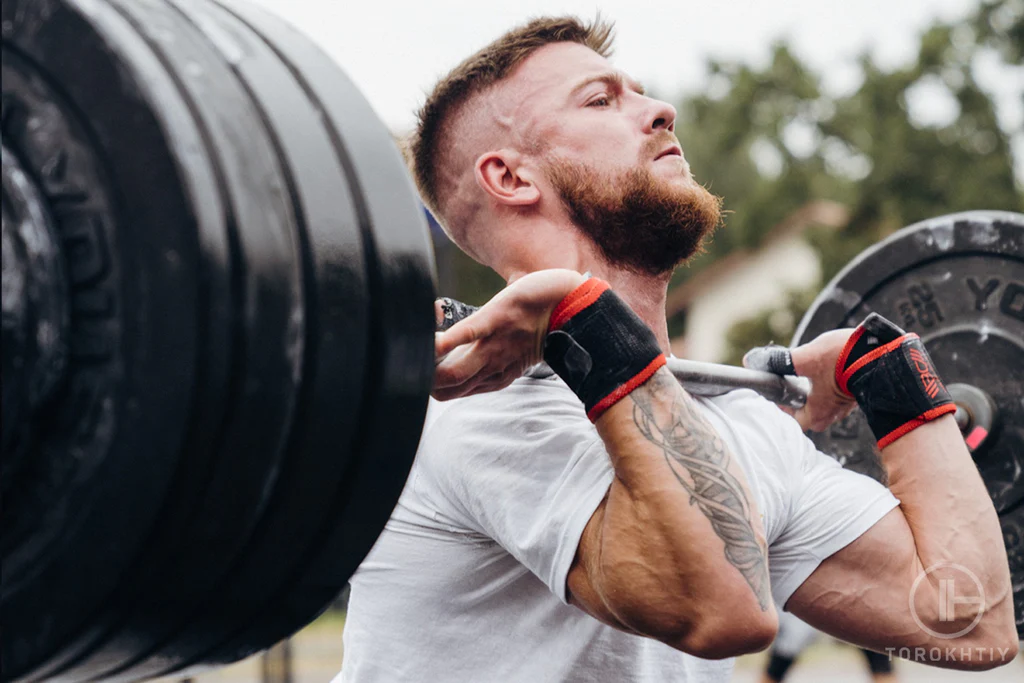
2. Readjust When Necessary
Properly tying your wraps is essential to ensure the security and stability they provide. Wrists can go through a variety of movements depending on the exercise you’re performing, which can sometimes cause wrist wraps to become loose and require readjustment. As a general rule, we highly recommend quickly checking your wraps for loose ends after each set, especially if you’ve used higher weights.
If you experience increasing discomfort during your later sets, take a moment to check if your wraps are still on correctly. When transitioning between exercises, it may be beneficial to take a second to unwrap them and redo the wrapping process just to be safe.
3. Use Them Appropriately
Wrist wraps should be specifically reserved for exercises that heavily rely on the wrists to control weight. These exercises typically involve pushing motions to generate force to drive the dumbbell or barbell away from you.
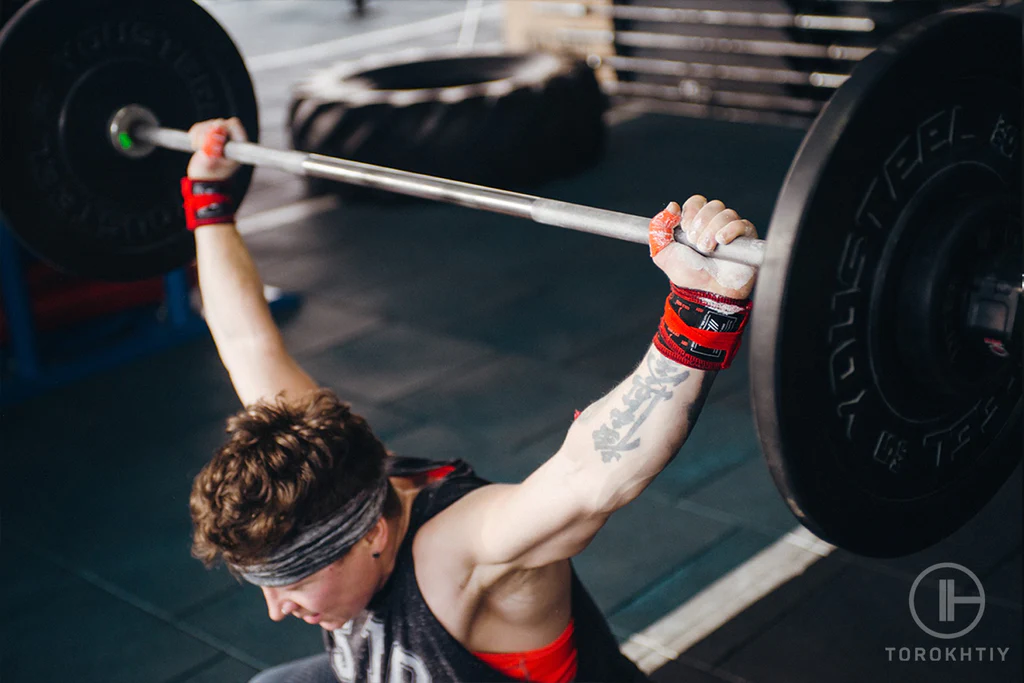
Conversely, as the weight comes back, most of the balancing and control goes through your wrists. Good examples would be the bench press, push press, overhead press, Olympic lifts, and similar exercises that emphasize pushing movements.
On the other hand, when performing exercises that do not require your wrists to support a significant portion of the weight, using wrist wraps can have an adverse effect. Exercises like barbell squats, lunges, and deadlifts, when executed correctly, do not place excessive pressure on your wrists. In these cases, it is generally more beneficial to have higher wrist mobility and allow yourself to develop natural grip strength.
When Not To Use Wrist Wraps?
Equally as important as knowing when to use wrist wraps is recognizing when they’re unnecessary. As previously mentioned, wraps can’t act as a crutch for poor technique or overdoing exercises.
There is rarely an instance when using them is hurtful to your performance, but over-relying on them can form some bad habits, such as mentally training yourself to rely on them and using them for the wrong exercise types. Usually, it’s unnecessary to wear them before you start reaching your maximum weight capacity, such as 80% or more.
Avoid using wrist wraps when warming up or doing lighter pre-workout sets with weight you can easily manage, to allow for full wrist mobility and build-up of natural joint strength and resistance. If you have an outstanding wrist injury and are in your rehabilitation phase, it may seem obvious to wrap your wrists for security.
However, restricting your movement and creating added pressure may be more detrimental to your recovery. In cases of injury, don’t use them unless they’re prescribed to you by a doctor or a professional in physical rehabilitation.
Our Recommended Product – WARM BODY COLD MIND Premium Cotton Wrist Wraps
These wrist wraps are made from all-natural cotton and infused with a touch of nylon for extra durability and elasticity. The material is especially comfortable and doesn’t irritate the skin or absorb sweat. The wraps feature a thumb loop for added stability and are secured using a cotton string – designed to save your wrists from poorly made velcro and uncomfortable metal or plastic buckles.
Each set is unisex and includes a pair of wraps, providing excellent value for your money. They also come in a variety of colors, including red/black, navy, orange, khaki, black, and the special edition black with focus markings, allowing you to choose your style.
FAQ
How To Wear Wrist Wraps With A Thumb Loop?
Easy, all you have to do is secure your thumb first before you start wrapping. Start by sliding the thumb through the loop and make sure it’s all the way in. Next, place the looped end at the base of your thumb and start wrapping in the opposite direction. Make sure to overlap each turn by about half the wrap’s width. Once you’re done, secure the wrap using the provided closure system, usually a velcro or buckle.
Do Wrist Wraps Weaken Your Wrist?
No, wrist wraps don’t carry negative effects, unless used improperly. Moreover, wrist wraps are there to provide comfort and support, they don’t have an effect on your strength.
Conclusion
This concludes our article on how to use wrist wraps. For an accessory that’s relatively inexpensive and easy to pick up and use, they can make a big difference. At the very least, wearing wrist wraps when appropriate can make the exercise feel more stable and comfortable and boost your confidence. Otherwise, it can prevent the build-up of joint micro-damage that can grow into serious joint issues down the line.
On the lookout for a pair? Check out the Warm Body Cold Mind premium cotton wrist wraps.
We’d also love to hear from you. Tell us if you’ve used wrist wraps before or if you plan to in the future. Also, share your favorite lifting exercises you plan to use your new wrist wraps for.
If you want more fitness content, make sure to give us a follow on our social media pages.
References:
- Wayne L Westcott, “Resistance training is medicine: effects of strength training on health,” Current Sports Medicine Reports 11(4):p 209-216, July/August 2012.
- Ju-hyun Lee, Tae-ho Kim, Kyu-bong Lim, “Effects of eccentric control exercise for wrist extensor and shoulder stabilization exercise on the pain and functions of tennis elbow,” Journal of Physical Therapy Science 30 no. 4 (2018): 590-594.
- Nengzhou Chen, Guanlin Li, Xin Sun, Meibian Zhang, Huadong Zhang, Ruijie Ling, Yiming Liu, Gang Li, Zaoliang Ren, Yan Yin, Hua Shao, Hengdong Zhang, Jiajie Li, Bing Qiu, Dayu Wang, Qiang Zeng, Zhanhui Liang, Rugang Wang, Jianchao Chen, Danying Zhang, Liangying Mei, Yongquan Liu, Jixiang Liu, Chengyun Zhang, Tianlai Li, Zhongxu Wang, Qingsong Chen, Ning Jia, “Prevalence status and associated factors of wrist postural injury in the Chinese occupational population,” Huazhong University of Science and Technology, Sec. Aging and Public Health 10, 23 November 2022.
- Dr. John Knight, “Smart Phone Hand Pain & How to Prevent It,” The Hand and Wrist Institute.
Author: Ihor Shymechko
Coach, PRO Olympic Weightlifter
Ihor Shymechko is a renowned Ukrainian weightlifter. He has represented his country in several Olympic Games, notably in 2008, 2012, and 2016. His impressive career includes winning the European championship in 2009 and earning a silver medal in 2011 in the +105 kg division. Shymechko also earned a Ph.D. from Lviv State University of Physical Culture.

